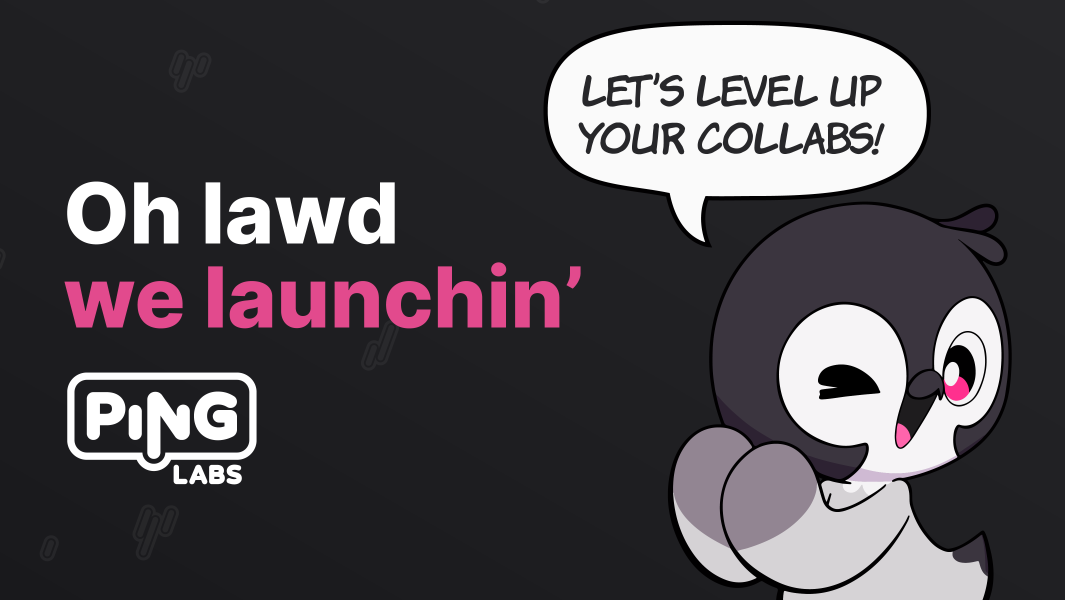I'm So Happy I Quit My Dream Job
Quitting your job to start a streaming company is dumb. Missing this opportunity feels way dumber. - Me (September 2021)
Reflecting on the past 9 months feels a bit surreal. When I wrote that post, I was a burnt out IC fresh to the startup world. Now I run an awesome company with a team I couldn’t be more proud of.
This post is a reflection on the absolute chaos I’ve thrown myself into. From Youtube to Y Combinator, from anime girls to Linus Tech Tips, and most importantly, from engineer to founder.
Keep it simple, stupid
For the majority of my career, I’ve had a strange sense of “this could be simpler”.
My first team at Twitch got this. We built the tech that powered Twitch marathons (Bob Ross, Power Rangers etc). There was no concern of scale (video infra team powered that), our role was going from weirdly formatted video files → RTMP. That was it. I’ve been chasing that simplicity since.
When I left Twitch and started working with smaller companies, it was clear that complexity was killing them, fast. Unlike my past experiences, simple wasn’t optional here.
Big companies like Twitch can eat the cost of complexity. Startups can’t. The flexibility and agility offered by simple solutions are necessary for a startup to survive. Tech like Kubernetes is the opposite of that.
When I started pushing for these simpler solutions, I was surprised by the response. I was proposing new architectures to awesome engineers with significantly more experience, and they were hyped. After years of fighting to trim complexity, this was hard to process.
I can do this
I started to realize, quickly, that I had what it took to really start something of my own. I dove straight into what I loved, great tools for video creation. The biggest pain point I’ve had has always been collaborative content. The crapshoot of screen capturing a Zoom call, virtual-audio-cable, OBS and prayer was not a stable solution for creators.
I started building Ping.gg to make live video collaboration easier. I started my youtube channel back up. I was making the things I always wanted to make.
And then things started moving really, really fast.
We’re a real startup now
The demand for Ping was nuts. Hundreds of waitlist sign ups in the first day. We rushed out a pricing page and went public with our early access.
Huge creators and brands like The Majority Report, Linus Tech Tips, Ironmouse, and even Elgato were using Ping in our first months. The difference from their old solutions was astounding.
By moving from Zoom/Discord over to Ping, our creators could now…
- Pull in guests with resolutions as high as 1080p at 60fps
- Control each guest as an individual source in your software of choice, allowing full customization of streams
- Think resizing/layout, remote chroma key, etc
- Safely manage all of these feeds with platform-specific OAuth. When Ninja from Twitch joins your show on Ping, you know it’s really him
Most importantly, Ping made collaborations simple and fun. Before Ping existed, setting up a collab was a painful, risky process that resulted in a low quality production. We believe that better tools make better collabs, and collaboration is the future of video content.
With the early inertia, I started meeting awesome people who wanted to be involved. I liquidated half my stock portfolio and most of my savings in order to pay them. I started fundraising, and then the unexpected happened.
We got into Y Combinator
This was a weird one. I am not a startup bro. I’ve always hated the stereotype and the people who conform to it.
But my closest mentors convinced me to join. Specifically Bill, the one shared the “do something a little stupid” quote from above. It was definitely the right decision.
YC pushed us in all the ways we didn’t know we needed. We got out in front of users earlier. We validated our market. We proved that collabs were the future of live video.
And it seems like Twitch agreed.
Getting Cloned By Your Dream Job
I’ll admit it’s a little disheartening to wake up excited for your big 1.0 launch, just to see Twitch rushing out a product to compete with us.
After years of pushing Twitch to build tools for creators, I set off to do it on my own. If Twitch had started this project while I was there, I would have excitedly jumped onto the opportunity to help creators.
That all said, I’m not too worried. If I’ve learned anything in the last year since leaving Twitch, it’s this:
They can’t keep up with creators.
We can.
Ping.gg 1.0 Launches Today, Starting at $16
We’re so hyped to announce that Ping has OFFICIALLY LAUNCHED as of today.
We learned so much from the last few months of early access. Specifically, we learned that our pricing sucked and the range of use cases was way, way wider than we originally thought.
To address this, we’ve introduced a new, granular pricing model where you can construct the perfect tier for your use case.
Ping now starts at $16/month.
You can use the same video collaboration tech as Linus Tech Tips for just $16. Best in class video quality, latency, security, and OBS integration.
We don’t want to hold back the quality of experience based on an arbitrary tiering system. We just want you to put on the best possible show.
Ping is for Professionals
We’re excited to see more entry-level tools entering the collaborative video space. From StreamYard to Stream Club to Twitch Guest Star, we think that early creators are well served.
We’re building for professionals.
Our creators don’t need an easy drag-and-drop layout. They need high quality and the deep integration with zero compromise. That’s what we’re building.
We’re excited to keep empowering professional creators.
